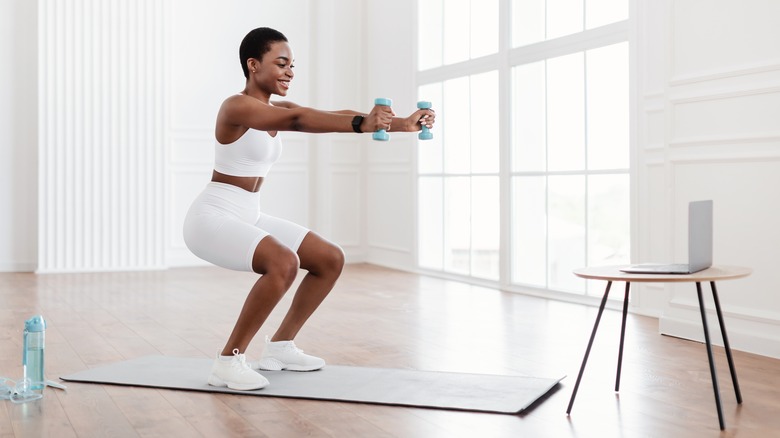Is Stretching Really A Form Of Exercise?
When it comes to exercise, most people think about hefty cardio or weight training. A routine that involves curling gallons of protein powder before going on a three-mile run or cycling until the wheels fall off. According to the Physical Activity Guidelines for Americans, the proper fitness routine calls for two days of strength training and 150 minutes of moderate exercise. Just 30 minutes a day can significantly affect our physical health.
A mix of aerobic activities and muscle strengthening is great preventative medicine. Regular exercise helps to reduce the risk of heart attacks, high blood pressure, obesity, depression, and memory loss. An after-work jog or playing in a weekend basketball game will help, but what about stretching? Stretching when you get out of bed is a morning workout. Surely, uncurling from the fetus position after a night of sleep counts as burning a calorie or two. However, will a serious stretching routine fulfill the amount of physical activity experts recommend?
Stretching should be a part of your exercise routine
Stretching is a form of exercise, not just a warmup or cool-down activity for cardio training. In an interview with Better by Today, stretch coach Brad Walker explains, "Stretching is a simple and effective activity that helps to enhance athletic performance, decrease the likelihood of injury, and assists with injury rehabilitation."
There are two main types of stretching — dynamic and static. Dynamic stretching involves motion that activates your muscles enhancing speed and dexterity. Some examples are walking lunges, high kicks, and jump squats. Static stretching extends the muscles and holds that position to improve flexibility. Touching your toes and reaching the sky are basic static stretches. In an interview with Well + Good, certified personal trainer Xtina Jensen says, despite its benefits, "You will not find that stretching alone is a great form of exercise." In fact, only sticking to a rigorous stretching routine can lead to joint laxity, which can cause injury. So what's the best way to incorporate stretching into your fitness life?
A balanced fitness routine
For a fitness plan that tackles 30 minutes of exercise, half of that time can be dedicated to stretching. Lunges are a beginner-friendly dynamic stretch with several iterations. It stabilizes the spine while working out your legs, glutes, and core. Personal trainer Soph shows three iterations of lunges with tips on increasing the intensity of this workout. You can pick a mix of dynamic and static stretches that fit your body's needs.
You can incorporate yoga or Tai Chi into your cardio and strength training. Adriene Mishler, the co-founder of Yoga With Adriene, has a 10-minute yoga routine for beginners, among many other tutorials, to get you moving. Brandon, behind the fitness brand Hybrid Calisthenics, has a great guide for a five-minute Tai Chi routine with many motivational videos to get your aerobics in too. Couple these stretches with your beginner strength training exercises, and it will be a productive half an hour.


